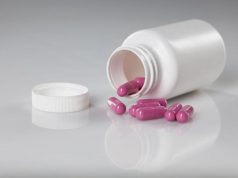Printed films, original powders exhibit similar crystallographic order and chemistry
WEDNESDAY, Oct. 4, 2017 (HealthDay News) — Small molecular medicines can be printed precisely using organic vapor jets, according to a study published online Sept. 27 in Nature Communications.
Olga Shalev, Ph.D., from the University of Michigan in Ann Arbor, and colleagues discussed the potential use of solvent-free organic vapor jets to print small molecular medicines.
The researchers found that nanostructured films of small molecular pharmaceutical ingredients could be deposited by use of solvent-free organic vapor jet printing; these ingredients included caffeine, acetaminophen, ibuprofen, tamoxifen, BAY 11-7082, and fluorescein. Accuracy was on the scale of µg per cm². The pharmaceutical ingredients could be printed onto glass, Tegaderm, Listerine tabs, and stainless steel microneedles. Similar crystallographic order and chemistry was demonstrated by the printed films and the original powders; relative to powder-form particles, controlled, order-of-magnitude enhancements of dissolution rate were observed. In vitro treatment of breast and ovarian cancer cell cultures in aqueous media by tamoxifen and BAY 11-7082 films showed similar behavior to drugs pre-dissolved in dimethyl sulfoxide.
“The ability to deposit small molecular drugs from their pure form, as films and without the use of solvents as shown here, opens an alternative approach to drug screening and manufacturing, where accurate dosage, chemical and structural stability, and processing flexibility are needed without hindering drug functionality,” the authors write. “The technique demonstrated here also potentially enables continuous manufacturing, eliminating the need for mixing and powder preparation.”
Copyright © 2017 HealthDay. All rights reserved.








